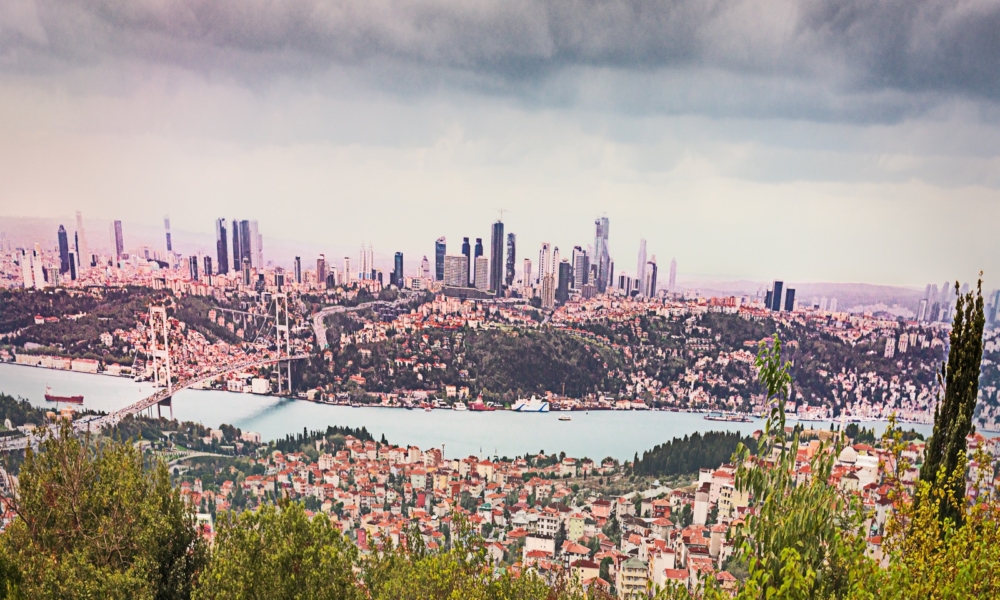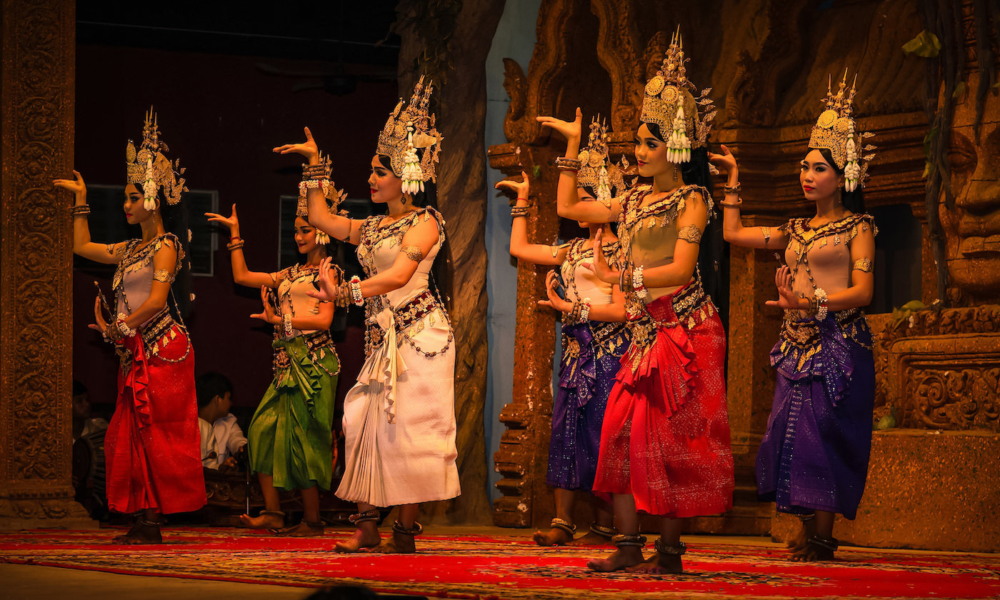For millions of years, shells of sea creatures collect on the floor of primitive oceans and eventually compact into rock-like limestone. Magnesium converts some of the limestones to slate-colored dolomite. Eons pass and somewhere, violent seismic activity pushes up the ocean floor. If the push is somewhat gentle, only the hills rise above the sea forming dramatic landscapes seen in countries like China, Vietnam, and New Zealand. A famous example is the Ha Long Bay in Vietnam.
If the push is epic, however, the sea retreats far away leaving behind limestone Mountains surrounding a valley. If the region has plentiful rain, then the gushing rainwater dissolves and washes away some of the limestones. Over the centuries, nature creates caves and amazing structures called Krast. These natural sculptures take very strange shapes and colors. Geologists believe that this is how both the famous Ha Long Bay grottos and the miracle Tam Coc caves were formed in Vietnam.
Mountain streams form a river that flows down the valley, winding around the mountains and in some cases, flowing right through them! One such river is the Ngo Dong in Vietnam. So come with me today on a boat ride down the river and through the mysterious caverns of Tam Coc!
Tam Coc Valley
Lesser known than the spectacular Ha Long Bay, the Tam Coc valley is no less picturesque. A lush green sea of paddy is dotted with emerald and jade hills. Their green slopes are speckled with patches of dark grey and white rock faces. The full spectacle of ripening paddy ranging from green to gold with the serene river flowing through can only be enjoyed once a year in May and June.

The mystical, watery beauty of the Tam Coc “three caves” region is truly captivating. The 1993 Oscar-winning French film Indochine captured the beauty of the Tam Coc valley and helped to put it on the tourist map. Today the Tam Coc caves are a must-see place for tourists, forming part of the Trang An Landscape Complex which is a UNESCO World Heritage site since 1914.
To begin the two-hour-long boat trip, you will have to queue at the Van Lam wharf at Tam Coc, which is roughly 70 miles southwest of Hanoi. The Sampan boats with up to 4 tourists on board pass through lush paddy fields while imposing Limestone mountains tower right over the boat.
The Three Caves
Tam Coc river trip is so popular that about 1,300 rowing boats are available to tourists and most villagers all around the valley own and operate them.

Your boat will be a small bamboo sampan, used all over Vietnam. Its two oars are tied to the gunwales with ropes instead of conventional rowlocks. Motorboats are not allowed on the river since they are noisy and polluting. The slow and almost noiseless paddles cause the boat to glide along slowly so you can truly appreciate the serenity and beauty of nature along the river before entering the caves.
There are three caves to experience. The third one is so low that you are asked to crouch. Hang Ca, literally Cave One is the widest and longest. It is roughly 420 feet long and more than 65 feet wide. No need to crouch here! Instead, look up and enjoy the multicolored layers of the limestone ceiling. The cave looks like an alien cavern! Perhaps Yoda is around the corner!

Mysterious Urns
Hang Hai is the second cave, literally Cave Two in English. It is about 200 feet long but narrower. Mysterious urns are stacked in the depths of the dark cave, containing the ashes of ancestors. Some Vietnamese are ancestor worshippers who believe that their ancestral spirits continue to live on in another realm and that it is the duty of living descendants to meet their needs. They follow the ancient practice of preserving the ancestral ashes in urns with red silk covers, stacked on the sides of the cave. Offerings are made to the urns on special days.

Hang Ba the third Cave is the last cave in the tour. It is 130 feet long and the lowest so that you will need to crouch to avoid hitting the low ceiling. As your boat emerges from the gloom of Hang Ba into bright sunlight, you are surrounded by high limestone hills. A beautiful ancient pagoda is on the left shore. Close by is an arched bridge, shimmering and mysterious in dappled light, perhaps a passage to an unseen land of magic. A landing stage gives access to a small pagoda.

It is easy to believe in the popular myth that fairies come at night to bathe here and then slip away to their hidden realm, perhaps stepping across that arched bridge!
After the break, your boat will turn around and the boatman will row you back to the starting point. The return journey is equally spectacular as the boat winds its way slowly, following the bends of the river in tranquil silence except for the faint swish of oars. If you are lucky, you may get a boatman who rows with his feet instead of his arms, a rare sight! A tip is expected at the end of the trip so that you and the boatman part with good humor all around! The journey ends but the magic will linger long in your mind!




Jayant Neogy
23 Mar 2021Suguna, you are so perceptive and very kind as always! Looking forward to your pictures of the Mekong river boat ride in Laos.
Incidentally, my earlier article in Imagely on the Crocodiles of Cambodia has some more pictures of the Mekong.
Suguna Swamy
21 Mar 2021Jayant, reading this late but on a quiet Sunday afternoon when I can savour the wonder of your imagery and reflect on the craggy mystery of the caves. Epic seismic activity indeed.
Took me back to a boat ride on the Mekong in Laos. Will send pictures separately.
The vast emerald landscapes are enchanting. Transported me briefly, all too briefly.
Prem Goswami
3 Mar 2021Must say you are getting mighty close to taking the perfect shot of the perfect scene. Getting rather envious of your travel and your descriptive photography.
Jayant Neogy
23 Mar 2021Sadly Covid stands in the way of expanding my horizon any further. Thanks for your comments!
Usha Rai
3 Mar 2021The boat ride into and out of the mysterious caves was serene and tranquil. Loved your narration Jaynto.
Usha Rai
Jayant Neogy
23 Mar 2021Many thanks for your encouragement, Usha
Jayant Neogy
3 Mar 2021Thanks, Scott. You have captured the essence of the magic so very well!